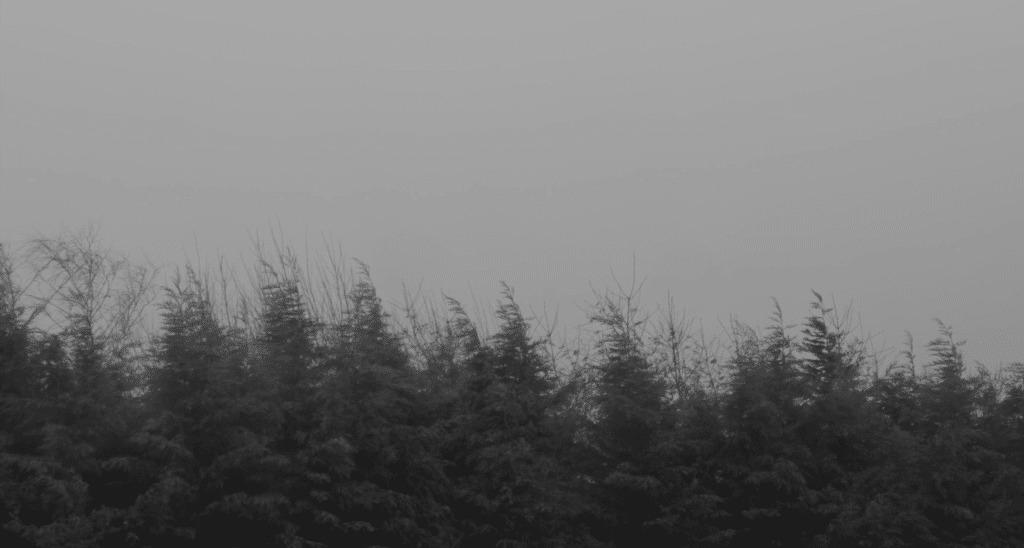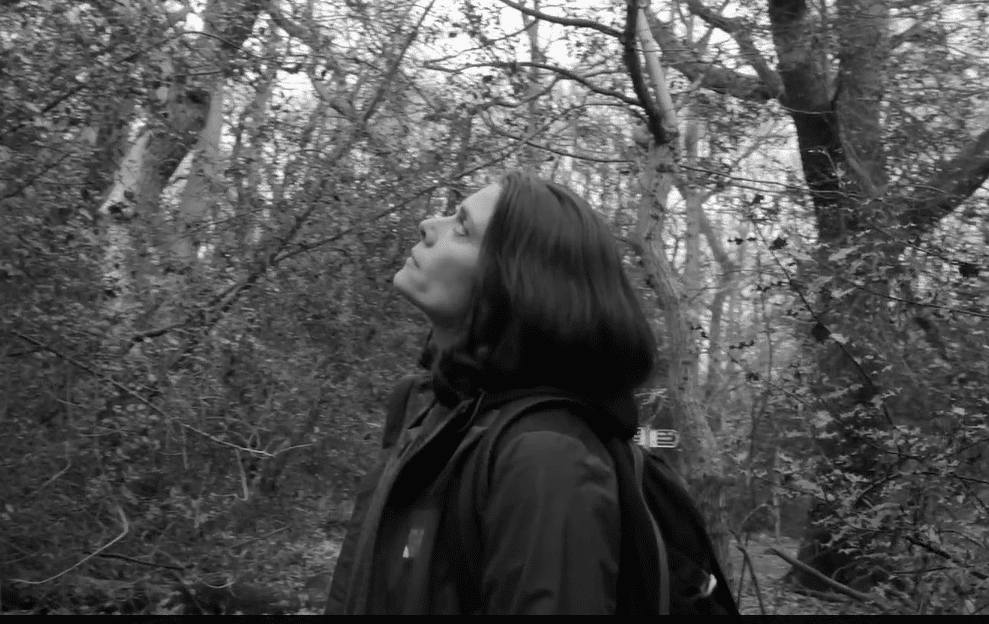
The Stoic Breeze may only be thirty or so minutes in length, but it is a film all about taking one’s time; by extension, it’s kinda all about time, and a person’s relationship with it, negotiated through the natural world. We start with a hand-held camera which very soon begins to feel like a character by the way it meanders through the film, recording and observing without intervening. So we, via it, catch up with a lone woman in the woods; soon afterwards, it seems, she heads back towards civilisation, where the soundscape changes dramatically – the constant background hum and hiss of vehicles obscures the sound of the wind through the trees which was established previously. We stay behind her: eventually the camera stops, allowing her to move off as the camera turns again to the trees running parallel to the road. Then she’s back off the path herself, back amongst the trees as if drawn there. Encounters with other people are handled politely, but kept very brief.
The female lead (Julia Bisby) could be seen as rather closed off – or self contained, depending on your perspective. What we do glean is that she’s fascinated with the nearby woods, and even when safely at home, spends her time looking at them from her window, listening. She also spends a lot of time outdoors, including as a runner. One day, as she’s out running in the same woods, she encounters a fellow runner who looks to be in some distress. So she stops to help the man, who is in enough trouble to appreciate the kindness of strangers.
Now, in a conventional film, be it a feature-length or a short, this would be the starting point for a narrative development, a new character, a new direction – but that’s not what The Stoic Breeze seems to be about. Director and cinematographer Tomas Gold has described it as ‘slow cinema’ – and it certainly is. If it’s thematically about anything, then it’s about how some people live if not contentedly as such (we don’t have enough evidence either way to say) then at least peacefully, alone. Other people here flit in and out of the female lead’s orbit, but don’t hang around; indeed, they’re not encouraged to. The film presents to us how it’s seen as quite unusual for people to be on their own, or to stand still doing ‘nothing’; our impulse is to wonder what’s going on with that person. As a frequent lone traveller, I’ve lost count of the number of horrified comments along the lines of, ‘You’re going by yourself? But what will you do?’ It stands out. But why should it?
Throughout the film, the treeline is a constant and we’re invited to just watch the ways the trees move, and of course, the way they sound. It’s a welcome constant in the The Stoic Breeze. It’s also key that the film is beautifully shot without being ‘pretty’: the frequently leaden British sky doesn’t get enough screen time, and the choice of black and white works effectively. Taken as a whole, the film is more a series of sensory moments than a piece of conventional storytelling, but there’s enough calm skill and detail here to draw audiences into its contemplative progress. It doesn’t answer questions readily, but it makes us curious, and as such, it’s an interesting and unusual, thought-provoking short film.
You can check out director Tomas Gold’s website, which includes access to The Stoic Breeze, here.
